The consumption of fish, both fresh and sea water, is increasing. On average we eat about 24 kg each year: twice as much as it was 50 years ago. According to the data of the latest Eurobarometer survey on the fish market, ben 30% of the villagers bring it to the table at least once a week, while 34% no less than one per month.
The reasons for this passion? “First of all, one increased consumer awareness the nutritional benefits of fish, then the speed with which it can be prepared. And finally its versatility: they exist hundreds of species with different organoleptic characteristics which lend themselves to multiple types of preparation », replies Dr. Domenicantonio Galatà, nutritionist biologist and president of the country's Association of Nutritionists in the Kitchen (Ainc). With his advice, we discover the benefits of this food.
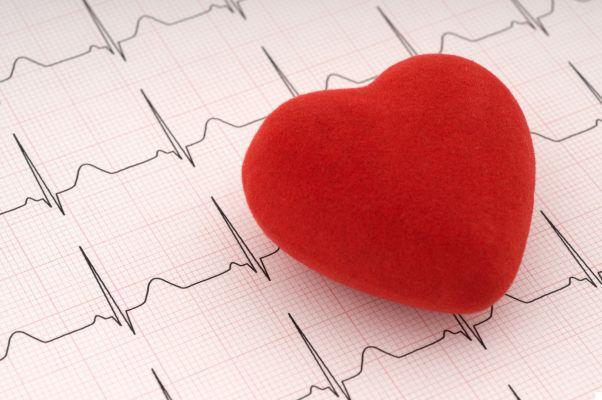
PROTECTS THE HEART AND ARTERIES
A recent study conducted by the Harokopio University of Athens showed that a diet rich in fish is able to lower the risk of experiencing cardiovascular problems.
"Particularly, the blue one is an excellent source of good Omega 3 fats, which cannot be synthesized by the body and must necessarily be taken with the diet », explains the nutritionist. «These substances have exceptional anti-inflammatory properties, useful for keeping arteries elastic. Like this improve blood circulation and counteract hypertension, lowering triglycerides and bad cholesterol (Ldl) in favor of the “good” one (Hdl) ».
But there's more: Another research, this time from the American Heart Association (Aha), shows that consuming two servings a week of oily fish reduces the chances of having a heart attack or stroke.

IT'S GOOD FOR THE BRAIN AND IMPROVES THE MOOD
The credit is once again of Omega 3, as demonstrated by a group of researchers from the University of Amsterdam. Their study, published in Nature, shows that the dietary intake (i.e. fish products) of these good fats contributes to cure sadness and depression. «Because they act on the fluidity of the membranes of the nerve cells and on the release of good mood neurotransmitters, such as serotonin, ”explains the expert.
In addition, according to researchers from the American Columbia University the consumption of fish it removes the risk of developing neurodegenerative diseases, such as senile dementia and Alzheimer's. "Omega 3, in addition to reducing inflammation, act as" anti-rust "substances protecting neurons from free radicals, responsible for aging and cognitive decline ", points out the nutritionist. "And the protective action against the brain also depends on the minerals of which fish is a source: selenium, phosphorus and iron are essential for the correct functioning of the nervous system ».

HELPS TO MAINTAIN THE WEIGHT-SHAPE
Fish, especially those caught in the sea, it is rich in iodine, a precious trace element to be able to make peace with the balance. «In fact, it favors the production of thyroid hormones, triiodothyronine (T3) and thyroxine (T4) which, in addition to affecting cholesterol and blood pressure, contribute to maintain an efficient basal metabolic rate and therefore to make you burn more calories », specifies the expert.
Fish is a useful food for the figure and physical shape in general for another reason: "Like meat, provides excellent biological quality proteins, in the sense that they contain all the amino acids essential for the growth, repair and reconstruction of tissues, including muscles. But it has an extra gear: its fats are not saturated (and therefore harmful to health if consumed in excess), but polyunsaturated », Dr. Galatà points out.
“They are good for the heart, the arteries, the brain, the nervous system, as we have seen. In addition, they allow the body to absorb fat-soluble vitamins with antioxidant action, such as A and E, which enhance the anti-free radical action of Omega 3 and give you a hand, especially in this period, to protect the skin from tissue aging induced by exposure to sunlight ».
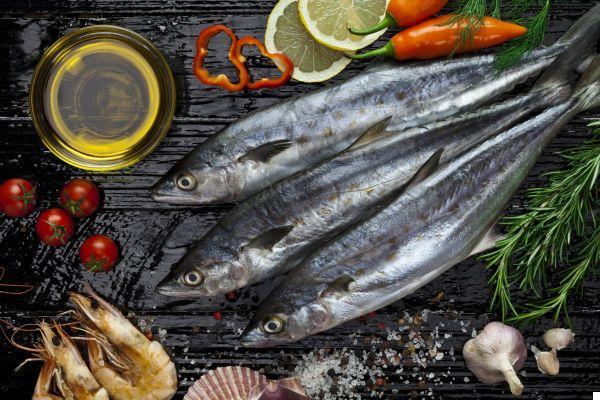
PREFER THE SMALL SIZE
Often due to lack of time and lack of familiarity with the stove pre-boned and filleted fish are preferred, which have meat similar to that of a "steak". More comfortable to cook, however, they are not always the best from the point of view of meat and safety.
«Large-sized varieties (tuna, swordfish) have a concentration of pollutants, such as i heavy metals present in the sea, greater than that of small-sized fish (anchovies, sardines, sea bass, mackerel, sea bream) », explains Dr. Domenicantonio Galatà. The amount of mercury is higher in their meats because they feed on other fish (which could be contaminated) and live longer.
«The advice to limit health risks and benefit from all the virtues of fish is therefore to prefer small specimens to larger and more long-lived ones, instead, to be consumed only once a month »suggests the expert.
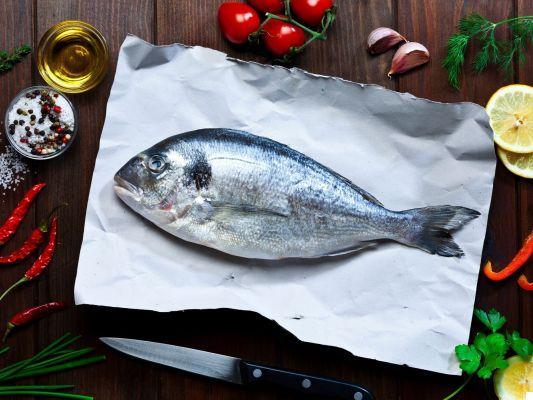
NOT TO BE SCAMED IN THE FISH MARKET OR IN THE MARKET
To prevent you from breaking a defrosted product for fresh in the fish market or in the local market, pay attention to the color: be wary if it is too intense and unnatural. The fish of the day it must be iridescent. Then focus on the eye of the fish, which must be shiny and rounded outwards, and on the body consistency, which must be rigid.
Before purchasing, dwell on the information on the tags of products sold in bulk or on the label of those already packaged. «Those exposed on the fresh counter they must report the scientific name in Latin (for example octopus vulgaris), the mandatory name in the language of the country (octopus type), the physical state (fresh or thawed), the area of capture (Mediterranean Sea, Black Sea or Atlantic Ocean. ..) and the sub-area », explains the doctor Valentina Tepedino, veterinarian and director of Eurofishmarket. “For example, if you are looking for a local fish it will not be enough for you to know that it comes from the "Adriatic Sea". The seller should better specify the landing or fishing area and have documentation to prove it in case of checks. The label must also indicate the production method (fished or reared), the category of fishing gear (such as "trawl nets") and the ingredients, to know if any additives are present like sulphites ".
Allowed by law, if used correctly (i.e. without exceeding the doses) these substances are not dangerous to health, but they must necessarily be indicated on the packaging or on the tags in the fish market. What are they for? "They slow down the oxidation and spoilage of fish. By retaining moisture and water, they are able to increase the weight of the product and make it more "attractive" in the eyes of the consumer. giving it a better color that lasts for longer»Explains the expert.
Also check how the fish is sold before buying: the ideal is that it is placed on ice. «Avoid taking it in the benches where it is present in large "piles" and decorated with vegetables or other elements that jeopardize its shelf life », advises Dr. Valentina Tepedino.
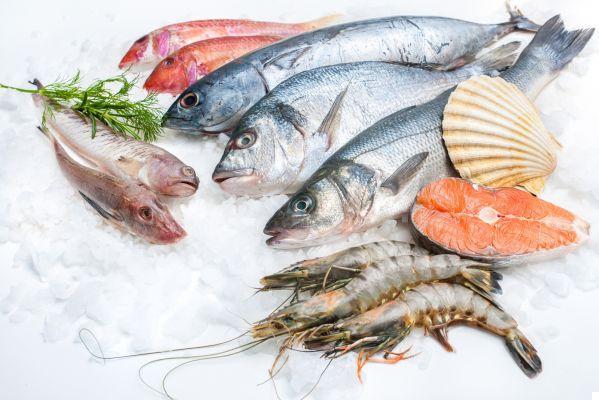
THE RULES FOR FROZEN FOOD
«In addition to what is foreseen for the fresh fish label, for sub-zero fish products the term "frozen" or "deep-frozen" must appear on the package and the percentage of glazing (the lower, the better, ed), that is, the ice used to preserve its organoleptic properties better and longer ”, adds our expert.
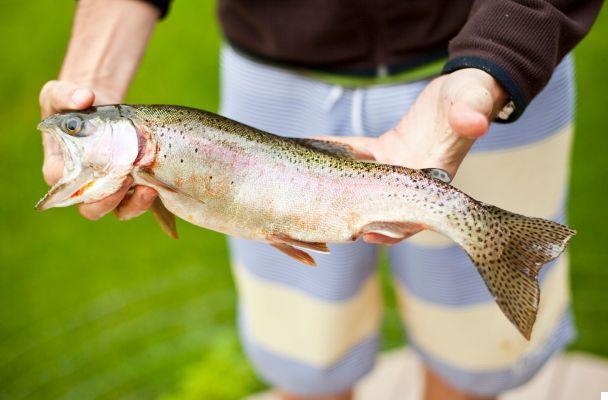
ALSO KNOW ABOUT THE FISHING METHOD
As explained above, on the fish label you will also find the category of fishing gear used. «This information can be useful for understand their quality and shelf life. For example, trawled anchovies tend to be smaller in size and they tend to get damaged more because of the crushing in the sack of the net, while those fished with the lampara system are larger and more intact », concludes Dr. Valentina Tepedino.

QUALITY FARMING
Over half of the fish products we bring to the table are farmed. «The quantity rises sharply from year to year in parallel with the increase in purchases. The "wild" fish in fact it is not sufficient to satisfy the demand growing consumers ”, explains Dr. Valentina Tepedino, veterinary surgeon and director of Eurofishmarket.
«Today bream, sea bass, trout, salmon are coming bred in an increasingly sustainable way and they have more and more nutritional and organoleptic characteristics similar to those of the products of the same species caught. A lot though depends on the type of breeding. To date, unfortunately, there is no "quality mark" which makes it possible to distinguish a fish that has grown well from one that has been treated or fed poorly ". We can then only rely on advice of the fishmonger you trust or focus on organic products, which guarantee compliance with precise rules, but are not very present on the market.
The right choice? "Alternate bred and fished», As Valentina Tepedino advises.
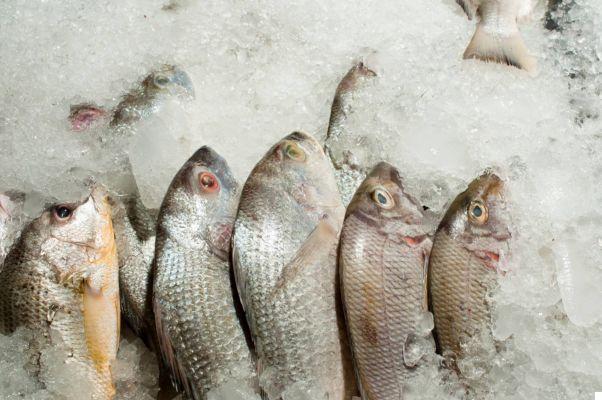
AS JUST FISHED
The "subzero" fish has le same characteristics as the fresh one. "Thanks to modern refrigeration technologies, frozen foods, especially if made immediately after fishing on board the so-called factory vessels, they are excellent both from a nutritional point of view and from a taste point of view. Furthermore, they have the advantage of being able to be stored for a long time and of maintaining their starting characteristics if prepared correctly and thawed in the refrigerator before consumption»Says doctor Valentina Tepedino.
If, on the other hand, you want to freeze a fresh product, use a domestic blast chiller. «It prevents the muscle fibers of the meat from deteriorating and losing consistency and water-soluble vitamins, such as those of group B», says Dr. Galatà.

COOKED OR RAW?
Il cooked fish is more nutritious and digestible: «Thanks to the high temperatures, the proteins of which it is rich become easily assimilable by the body», explains Dr. Domenicantonio Galatà. Not only: with cooking the fish also becomes safer both from the point of view of environmental contaminants and from the hygienic one.
«Several studies have shown that high temperatures are not only capable of destroy parasites and other microorganisms, But also reduce the amount of mercury by 50-60% possibly present and to decrease the concentration of polychlorinated biphenyls and persistent organic pollutants », points out the nutritionist biologist.
So is it better to avoid raw fish? "Certainly not. But it should be consumed only after keeping it in the freezer (at -18 ° C) for 4-5 days. This is the only way to avoid toxinfections»Says the expert.


























